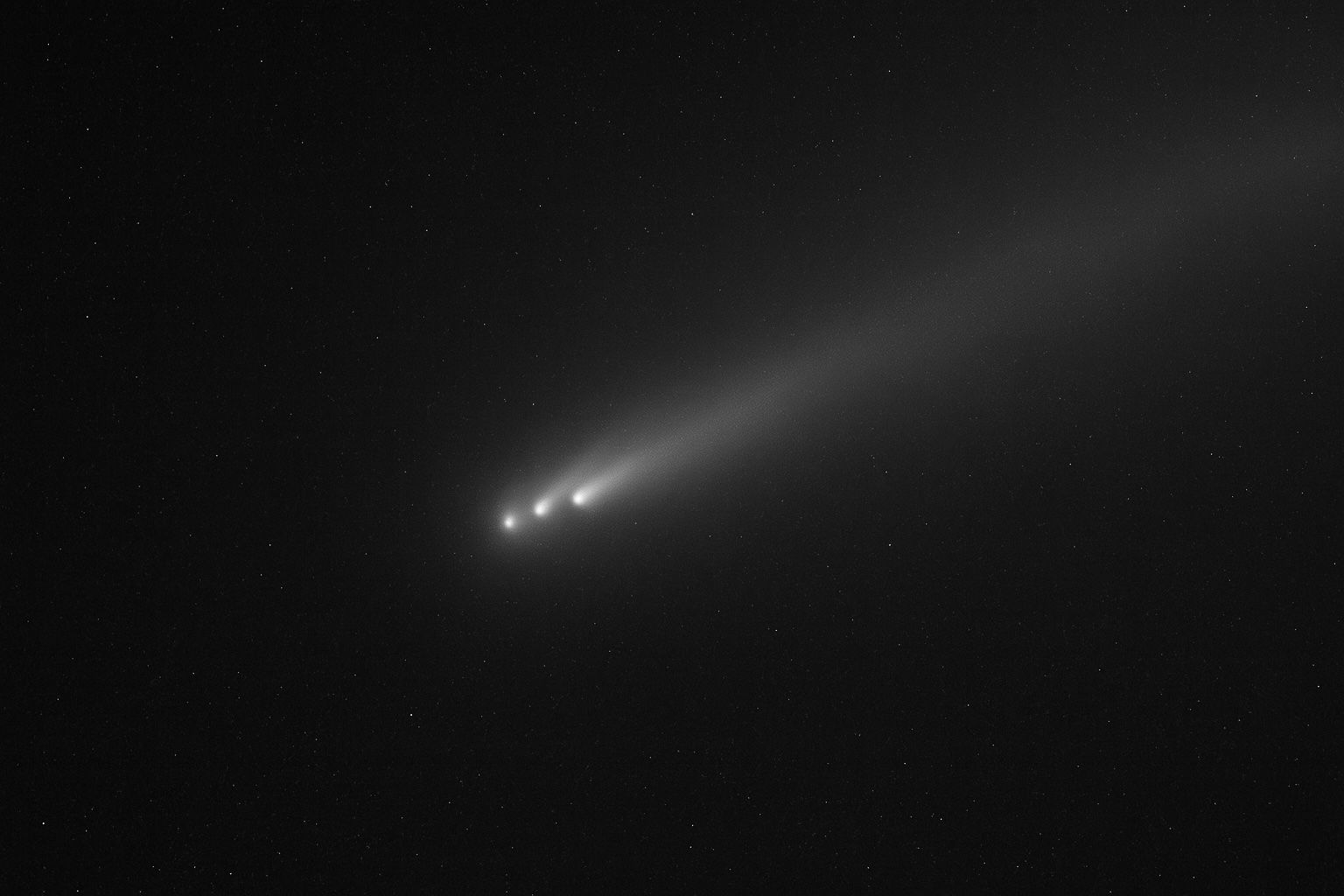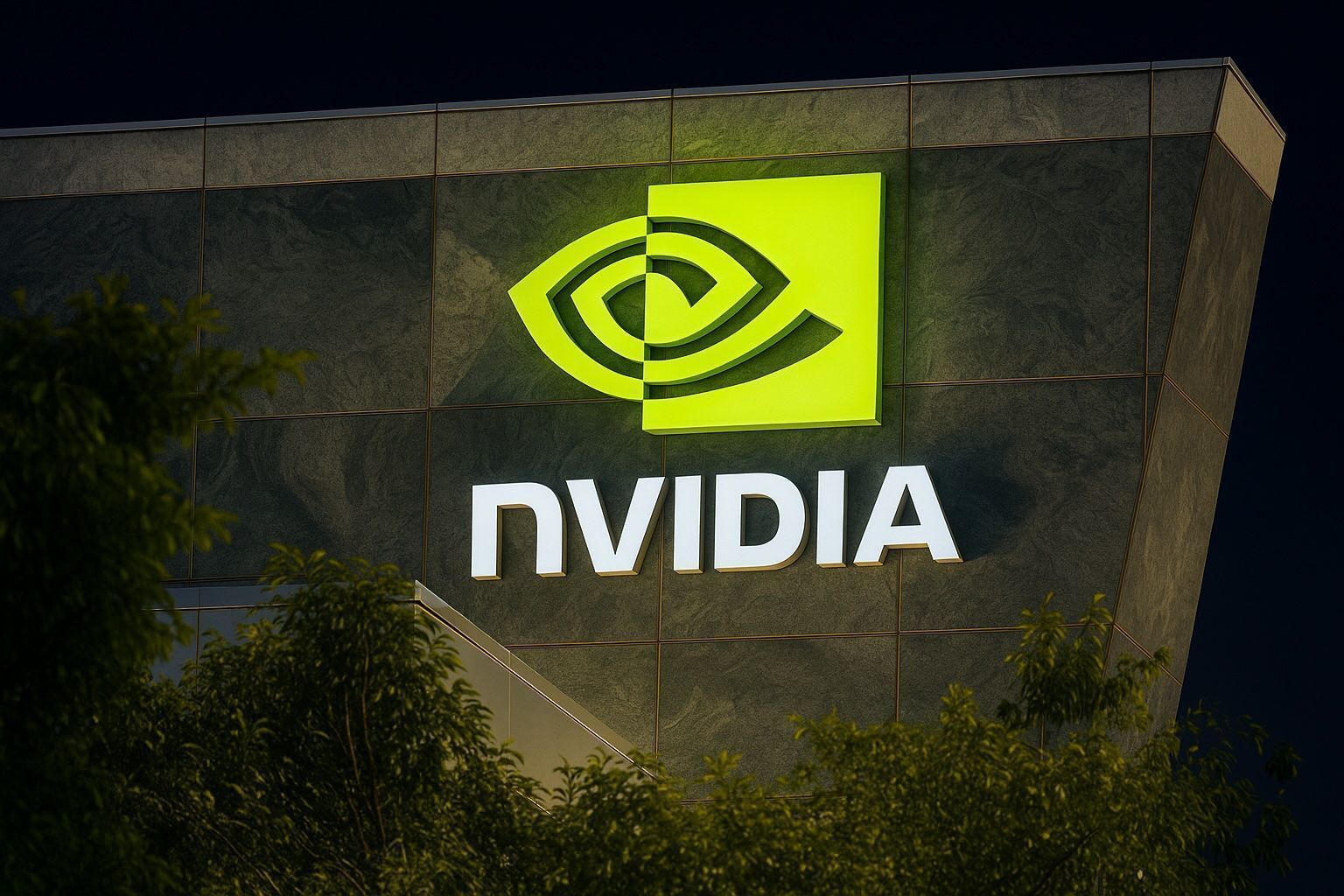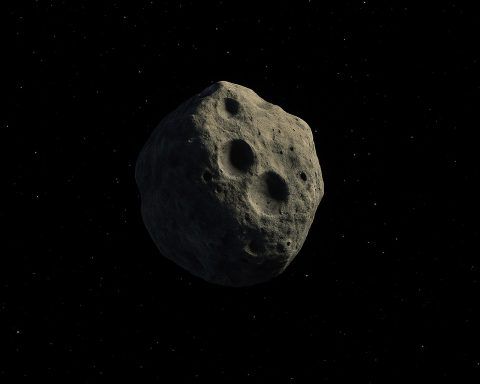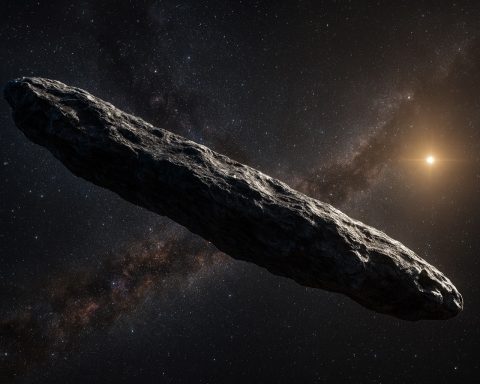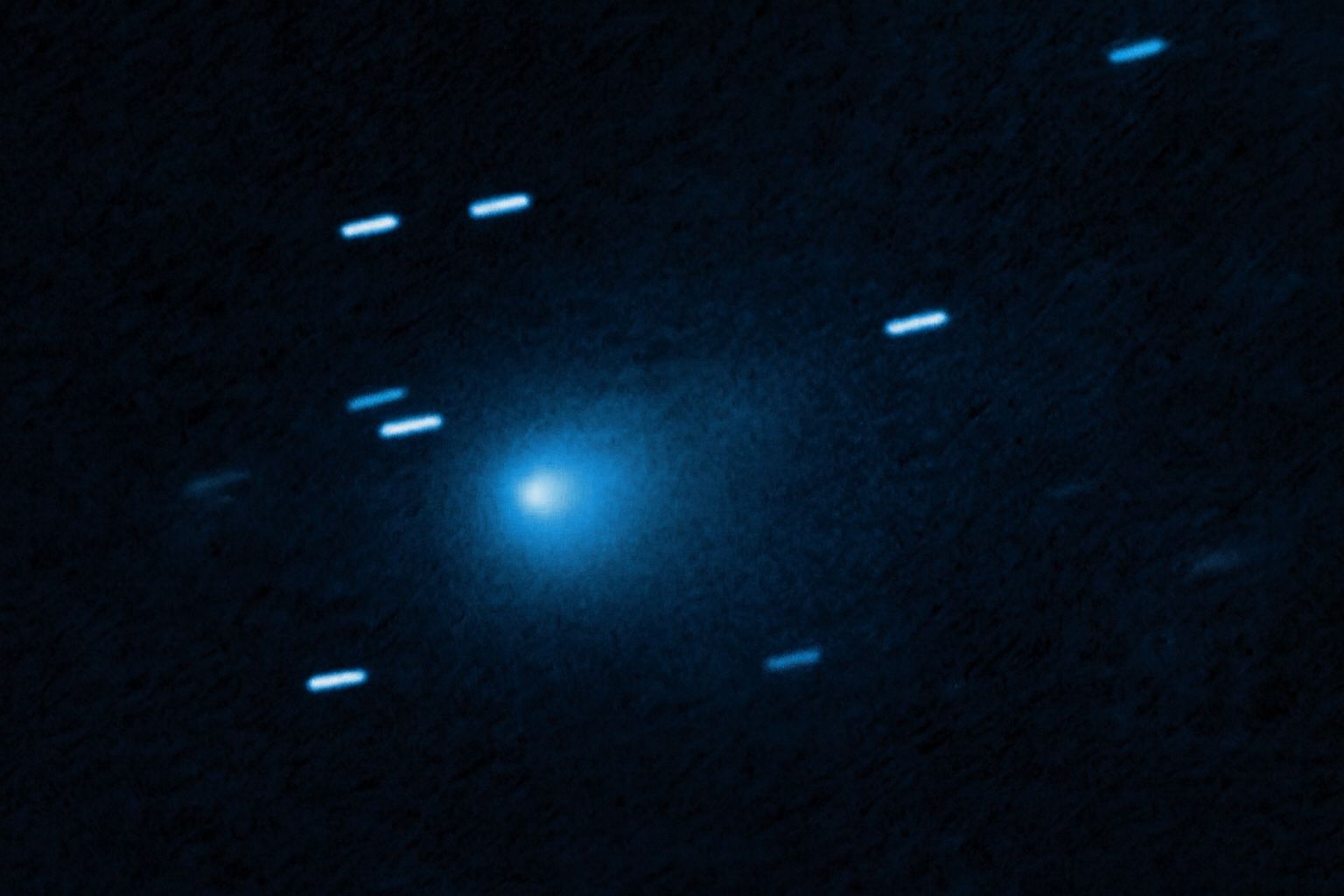Updated 18 November 2025
Interstellar comet 3I/ATLAS is having a huge day in the headlines. As of today, 18 November 2025, astronomers have unveiled a spectacular new multi‑tailed image, NASA has confirmed details of a live global broadcast tomorrow to share the sharpest spacecraft images yet, and new research is sharpening its role as a test case for defending Earth from future cosmic intruders.
At the same time, fresh comments from Harvard astronomer Avi Loeb are reigniting online speculation that 3I/ATLAS might be something more than a comet – speculation that most planetary scientists still firmly reject. [1]
Key 3I/ATLAS updates for 18 November 2025
- Stunning new photo with multiple tails: A New Mexico astrophotographer captured 3I/ATLAS streaking past galaxy NGC 4691, revealing a green coma, a long ion tail, a shorter “anti‑tail” and several gas jets, published today by LiveScience. [2]
- NASA’s big show is tomorrow: A NASA media advisory confirms a live event on Wednesday, 19 November at 3 p.m. EST from Goddard Space Flight Center, where the agency will unveil never‑before‑seen images of 3I/ATLAS from multiple spacecraft and telescopes. [3]
- Planetary‑defense milestone: ESA reports that its ExoMars Trace Gas Orbiter has improved the comet’s predicted path by a factor of 10 using Mars‑orbit data – the first time a spacecraft around another planet has submitted astrometric measurements to the Minor Planet Center. [4]
- Easy (ish) target for telescopes: New observing guides today say 3I/ATLAS is around magnitude 9–10 in the constellation Virgo, visible before dawn in moderate amateur telescopes, with a free Virtual Telescope livestreamfeaturing the comet scheduled for tonight. [5]
- Weird chemistry, natural explanation: A new research preprint highlights extreme CO₂ enrichment and a red, space‑weathered crust likely sculpted by galactic cosmic rays, reinforcing the picture of a very old but natural comet, not a spaceship. [6]
- Alien‑probe chatter spikes again: Coverage in outlets like NDTV and the Economic Times amplifies Avi Loeb’s new blog on “anomalies” and a hypothetical thruster‑driven maneuver – even as other astronomers publish detailed rebuttals explaining those anomalies with normal comet physics. [7]
What is 3I/ATLAS, exactly?
3I/ATLAS – formally C/2025 N1 (ATLAS) and previously tagged A11pl3Z – is the third confirmed interstellar objectever detected in our Solar System, after 1I/ʻOumuamua (2017) and 2I/Borisov (2019). [8]
Key facts:
- Discovery: 1 July 2025 by the Asteroid Terrestrial‑impact Last Alert System (ATLAS) station at Río Hurtado, Chile. [9]
- Orbit: It follows a strongly hyperbolic, one‑way trajectory, proving it’s not gravitationally bound to the Sun and will never return. [10]
- Size: Hubble and other data suggest a nucleus maybe 0.3–5.6 km across – somewhere between a big city and a small mountain. [11]
- Speed: It screams through the inner Solar System at roughly 130,000–155,000 mph (210,000–250,000 km/h). [12]
- Closest approaches:
NASA and ESA both stress that 3I/ATLAS poses no impact risk to Earth; even at closest approach it will be almost twice as far away as Mars typically is at opposition. [16]
Today’s headline image: 3I/ATLAS photobombs a galaxy with multiple tails
One of the most eye‑catching updates today comes from an astrophotographer in New Mexico, whose new image – published by LiveScience – shows 3I/ATLAS streaking past the barred spiral galaxy NGC 4691, about 70 million light‑years away. [17]
The photo reveals:
- A bright green coma (the glowing gas cloud around the nucleus).
- A long, classic ion tail pointing away from the Sun.
- A shorter, spike‑like “anti‑tail” created by dust geometry and viewing angle.
- Several smaller jets of gas, visible as tiny spikes emerging from the coma, driven by sun‑heated ices “outgassing” from cracks in the surface. [18]
Crucially, the photographer explicitly pushes back on alien hype, saying this dramatic scene is a reminder of the comet’s perfectly natural interstellar origins, not evidence of an engineered object. [19]
The image also clarifies one recent rumor: in early November, 3I/ATLAS briefly seemed to lose its tails, leading to online whispers of an explosion. In reality, it was a line‑of‑sight illusion – the main tail was pointed almost directly away from Earth, making it hard to see. [20]
Mars‑based tracking: a rehearsal for defending Earth
Another big piece of the 3I/ATLAS puzzle is trajectory tracking, where today’s coverage really leans into the planetary‑defense angle.
ESA reports that between 1–7 October, its ExoMars Trace Gas Orbiter (TGO) turned the CaSSIS camera away from Mars and toward the comet as it swept past the Red Planet at a closest distance of about 29 million km on 3 October. [21]
By combining those Mars‑orbit images with Earth‑based observations, ESA:
- Boosted the accuracy of 3I/ATLAS’s predicted position by roughly a factor of 10.
- Delivered the first ever astrometric measurements from a spacecraft orbiting another planet to the Minor Planet Center.
- Demonstrated how triangulation from multiple worlds can sharpen tracking of fast‑moving visitors. [22]
ESA explicitly frames the whole exercise as a planetary‑defense test case – a rehearsal for the day when something doeshead our way on a risky trajectory. It also links 3I/ATLAS to future missions like NEOMIR, designed to spot objects hidden in the Sun’s glare, and the Comet Interceptor mission, which aims to ambush a future long‑period or interstellar comet. [23]
Meanwhile, ESA notes that its JUICE spacecraft, en route to Jupiter, is also observing 3I/ATLAS now that the comet has passed perihelion. That data won’t arrive until early 2026, but it should capture the comet in a highly active state. [24]
How and where to see 3I/ATLAS today
For skywatchers, 18 November brings good – if challenging – news.
Brightness and location
Updated observing reports today from Sky & Telescope, BBC Sky at Night and live ephemeris services agree that: [25]
- 3I/ATLAS is around magnitude 9–10 – too faint for the naked eye, but reachable with medium‑sized amateur telescopes (15–20 cm / 6–8 inches) under dark skies.
- It’s currently in the constellation Virgo, low in the eastern pre‑dawn sky.
- Around mid‑November, it sits a couple of degrees below the bright star Porrima (Gamma Virginis), a useful signpost. [26]
Observers report the comet as a small, condensed fuzzball with a subtle tail visible in larger instruments. One observer quoted by Sky & Telescope notes that it’s already visible in a 4.5‑inch spotting scope from dark sites, which is better than many early forecasts predicted. [27]
Over the coming weeks, 3I/ATLAS will climb higher before dawn, drifting from Virgo into Leo and making its closest approach to Earth on 19 December, when it will lie not far from the bright star Regulus – still a telescopic object, but easier to locate. [28]
Watch it online tonight
If you don’t have a telescope, there’s still a way to “see” this interstellar visitor tonight.
Space.com highlights a Virtual Telescope Project livestream, now scheduled for 23:15 EST on 18 November (04:15 UTC on 19 November), offering real‑time views of 3I/ATLAS from robotic telescopes in Manciano, Italy. [29]
That event, delayed from 16 November due to weather, is timed perfectly for the comet’s return to the early‑morning sky and should showcase its tail as it races away from the Sun on an escape trajectory out of the Solar System. [30]
NASA’s big show tomorrow: high‑res images from Mars and beyond
Several outlets – including NASA’s own media advisory, LiveScience, ScienceAlert, EarthSky, Space.com, the Houston Chronicle and Times of India – are all pushing the same message today: tomorrow is 3I/ATLAS’s big NASA moment. [31]
Here’s what we know:
- When: Wednesday, 19 November 2025, at 3 p.m. EST (20:00 UTC). [32]
- Where to watch:
- NASA+ streaming service
- The NASA app
- The NASA Live website and YouTube channel
- Coverage embedded on partner sites like Space.com and ScienceAlert [33]
- What we’ll see:
- High‑resolution images from Mars Reconnaissance Orbiter’s HiRISE camera, taken around the 3 October flyby, when 3I/ATLAS passed about 18–19 million miles from Mars. [34]
- Additional imagery from other NASA missions and ground‑based observatories that followed the comet as it slipped behind the Sun and emerged again. [35]
- Why the delay?
- Much of the pipeline for public outreach was frozen during a U.S. government shutdown from 1 October to 12 November, leaving images sitting in the queue until staff returned. [36]
NASA describes 3I/ATLAS as an opportunity to use the agency’s “unique capability to observe [it] almost the entire time it passes through our celestial neighborhood” using a network of missions at Mars, near Earth and in deep space. [37]
Fresh science: a cosmic‑ray‑baked comet older than the Solar System
Beyond pretty pictures, 3I/ATLAS is driving serious new science.
A recent paper highlighted on Astrobiology.com uses JWST/NIRSpec and SPHEREx data to show that 3I/ATLAS is extremely enriched in carbon dioxide, with CO₂/H₂O about 7.6 and unusually high carbon monoxide as well – far above typical Solar System comets. [38]
The authors argue that:
- The outer layers of the comet’s nucleus have been heavily processed by galactic cosmic rays during its long exile between the stars.
- Cosmic‑ray irradiation can convert CO to CO₂ and build a red, organic‑rich crust, matching the observed colors and composition.
- Current outgassing only taps the outer ~15–20 meters of this processed crust, meaning we’re not yet seeing truly pristine interior ices. [39]
That flips an old assumption: instead of interstellar comets being perfect time capsules of their birth systems, 3I/ATLAS suggests that long‑residence interstellar objects mostly show us what billions of years of radiation do to icy bodieswandering the galaxy. [40]
Estimates from NASA‑linked teams also suggest 3I/ATLAS may be older than 7 billion years, predating our Solar System by several billion years. [41]
The alien question: what’s actually happening with the 3I/ATLAS debate?
With all the weird behavior – multiple tails, color changes, unusual chemistry, radio detections and small non‑gravitational accelerations – it was probably inevitable that 3I/ATLAS would become an internet Rorschach test.
What Avi Loeb is saying
Harvard astronomer Avi Loeb has published a new Medium essay and given interviews arguing that 3I/ATLAS shows enough “anomalies” to keep open the possibility of alien technology:
- He highlights the comet’s unusual CO₂‑rich composition, substantial size and post‑perihelion behavior.
- In coverage summarized by NDTV and others today, he discusses a hypothetical “post‑perihelion maneuver”driven by thrusters pointing sunward, which could in principle boost the object outward using the Sun’s gravity. [42]
Tech and science‑news outlets like Futurism have amplified those ideas with headlines about thrusters, “tendrils” reaching toward the Sun and an object “slamming on the brakes.” [43]
How most astronomers are responding
The broader planetary‑science community has been unusually vocal this time:
- NASA’s official FAQ and outreach pages emphasize that all current data are consistent with a natural comet, noting that 3I/ATLAS has a standard coma, tails and composition broadly similar to other comets (if more extreme in some ratios). [44]
- BBC Sky at Night ran a widely shared piece under the heading “It’s never aliens”, explicitly debunking claims that 3I/ATLAS has “changed direction,” is metallic, or is secretly broadcasting signals. [45]
- Astronomers like Jason Wright have gone through Loeb’s list of “anomalies” one by one, showing that they can be explained by outgassing jets, viewing geometry, measurement uncertainties and cosmic‑ray‑altered chemistry– all expected for a highly irradiated interstellar comet. [46]
In other words, 3I/ATLAS really is weird, but “weird” is exactly what scientists expected from an ancient comet that has spent eons in interstellar space and is now being observed with cutting‑edge instruments.
There’s no credible evidence so far that it’s anything other than an unusually active, chemically extreme natural comet.
Why 3I/ATLAS matters for the future
Today’s news cycle also underscores why astronomers are so excited about 3I/ATLAS beyond the alien‑debate noise:
- It’s a laboratory for interstellar material
- 3I/ATLAS gives us a direct sample of icy material formed around another star system, potentially older than the Sun. [47]
- It’s a stress‑test for our observing network
- NASA and ESA have used everything from Hubble and JWST to Mars and Jupiter‑bound missions, plus ground‑based telescopes, to track the comet from multiple angles. [48]
- This is exactly the kind of “global fire drill” planetary‑defense planners need to practice spotting and characterizing fast movers. [49]
- It’s shaping future missions
- ESA explicitly connects lessons from 3I/ATLAS to NEOMIR (to watch for objects coming from the Sun’s direction) and Comet Interceptor, which could one day intercept a future interstellar visitor on purpose. [50]
Quick FAQ: 3I/ATLAS on 18 November 2025
Is comet 3I/ATLAS dangerous?
No. Its closest approach to Earth on 19 December 2025 will still be about 170 million miles (270 million km) away – far beyond any impact concern. [51]
Can I see 3I/ATLAS with the naked eye?
No. Even now that it has brightened more than expected, it sits around magnitude 9–10, requiring at least a moderate telescope or a sensitive smart‑scope. It will never become a naked‑eye spectacle. [52]
Where is 3I/ATLAS in the sky tonight?
Before dawn on 18–19 November, it’s in Virgo, a couple of degrees below Porrima as seen from mid‑northern latitudes, rising in the east in the early hours. Exact rise and transit times depend on your location; services like TheSkyLive provide up‑to‑date ephemerides. [53]
How do I watch NASA’s 3I/ATLAS event?
Tune in on Wednesday, 19 November at 3 p.m. EST (20:00 UTC) on NASA+, the NASA app, the NASA Live website, or NASA’s YouTube channel. Many outlets, including Space.com and ScienceAlert, will embed the stream. [54]
So… is 3I/ATLAS an alien spacecraft?
All the solid evidence right now points to “no”. Its coma, tails, outgassing and composition are all consistent with a very unusual but natural interstellar comet whose oddities can be explained by radiation processing and jet activity. The alien‑probe idea remains a speculative minority view, not the scientific consensus. [55]
References
1. www.ndtv.com, 2. www.livescience.com, 3. www.nasa.gov, 4. www.esa.int, 5. skyandtelescope.org, 6. astrobiology.com, 7. www.ndtv.com, 8. science.nasa.gov, 9. science.nasa.gov, 10. earthsky.org, 11. earthsky.org, 12. www.esa.int, 13. www.livescience.com, 14. www.space.com, 15. www.livescience.com, 16. www.nasa.gov, 17. www.livescience.com, 18. www.livescience.com, 19. www.livescience.com, 20. www.livescience.com, 21. www.esa.int, 22. www.esa.int, 23. www.esa.int, 24. www.space.com, 25. skyandtelescope.org, 26. skyandtelescope.org, 27. skyandtelescope.org, 28. www.skyatnightmagazine.com, 29. www.space.com, 30. www.space.com, 31. www.nasa.gov, 32. www.nasa.gov, 33. www.nasa.gov, 34. www.livescience.com, 35. www.nasa.gov, 36. www.livescience.com, 37. www.sciencealert.com, 38. astrobiology.com, 39. astrobiology.com, 40. astrobiology.com, 41. earthsky.org, 42. www.ndtv.com, 43. futurism.com, 44. science.nasa.gov, 45. www.skyatnightmagazine.com, 46. sites.psu.edu, 47. earthsky.org, 48. www.space.com, 49. www.esa.int, 50. www.esa.int, 51. www.livescience.com, 52. skyandtelescope.org, 53. skyandtelescope.org, 54. www.nasa.gov, 55. science.nasa.gov
